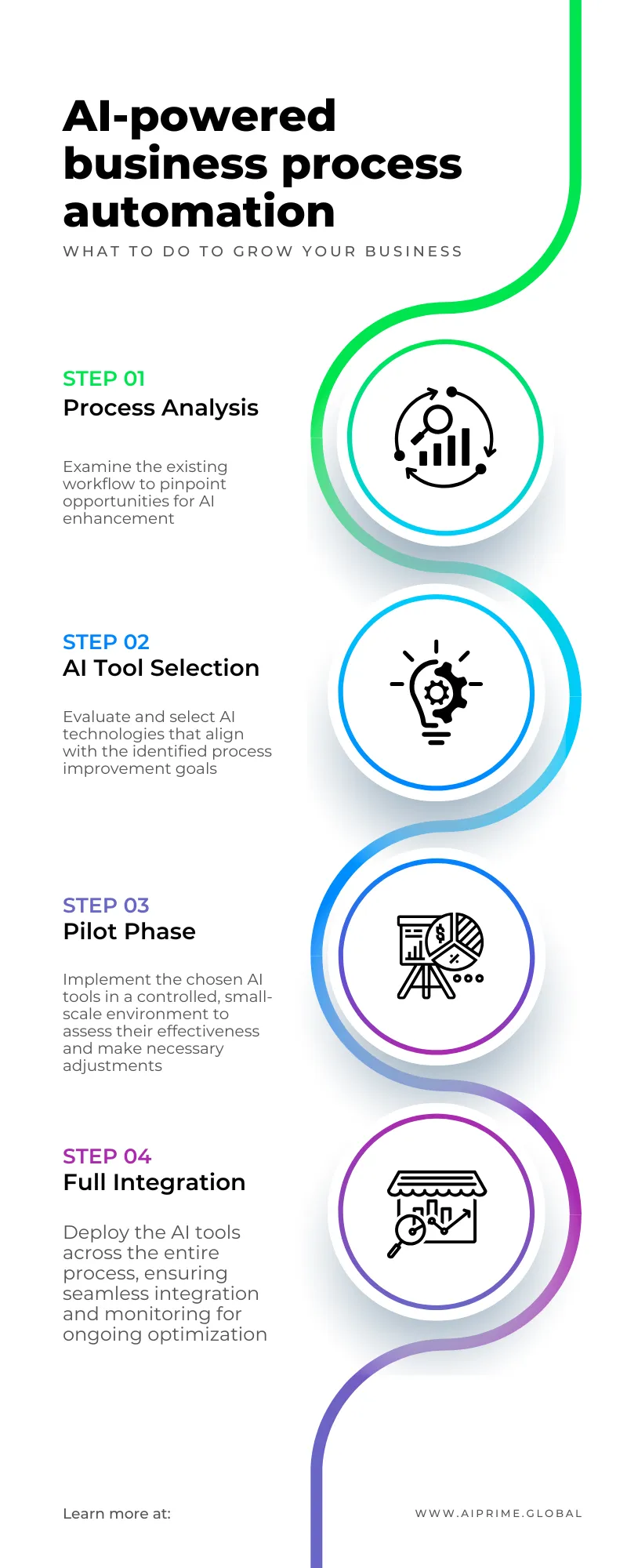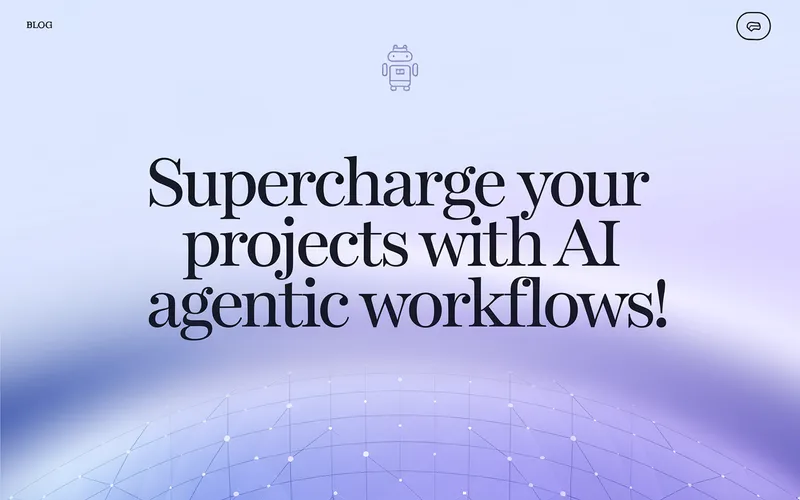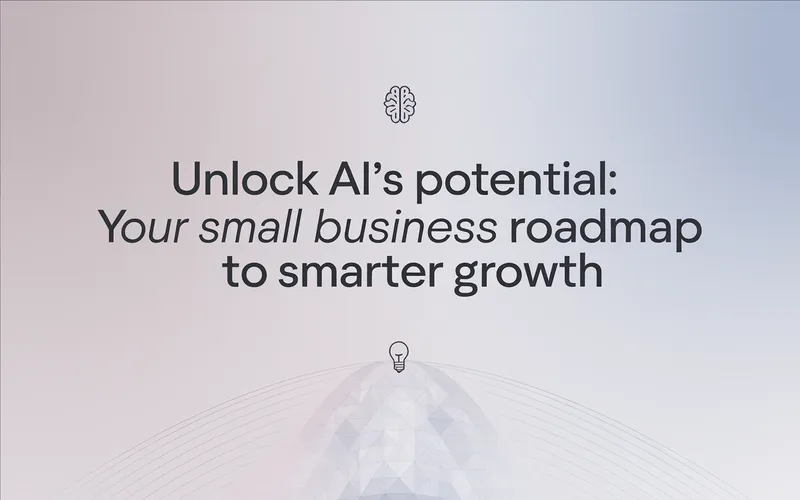
In today's rapidly evolving business landscape, the need to streamline operations and enhance efficiency has never been more urgent.
Business process automation with AI is emerging as a game changer for small to medium-sized enterprises. It enables organizations to:
Automate repetitive business tasks
Harness the power of data analytics for improved decision-making
As business owners, C-level executives, and IT managers seek innovative solutions to drive productivity and boost customer satisfaction, embracing automation powered by artificial intelligence becomes not only a competitive advantage but also a critical strategic move.
This comprehensive guide will:
Explore how AI revolutionizes business process automation
Highlight key workflow automation benefits
Provide a practical roadmap for implementation specifically tailored for SMEs
Additionally, we will delve into real-world success stories that showcase tangible results and offer insights into the future of automated business processes. Get ready to discover transformative insights and actionable strategies that will empower your organization to excel in a digital age where efficiency and innovation are paramount.

How AI Drives Business Process Automation
Artificial intelligence is no longer just a buzzword; it has become a fundamental tool that revolutionizes business process automation. By integrating smart algorithms and machine learning into routine processes, companies can automate tasks that once required extensive manual effort. The result is enhanced operational efficiency, reduced error rates, and significant cost savings.
Traditional business operations often rely on repetitive, time-consuming tasks that drain resources and heighten the risk of human error. As organizations increasingly depend on data-driven insights, AI-powered automation transforms large volumes of data into actionable intelligence by using predictive analytics to identify patterns and streamline tasks.
The seamless integration of AI tools with existing enterprise software—such as ERP or CRM systems—allows companies to optimize workflows. This integration enables faster lead times and improved decision-making by tailoring automation processes to fit specific operational needs.
Customization: AI solutions can be tailored to meet unique business requirements, from chatbots in customer service to predictive demand forecasting in supply chain logistics.
Enhanced Analytics: Deep insights into process performance help identify bottlenecks and open new avenues for innovation.
Improved Efficiency: Automation frees up human resources to focus on strategic tasks, leading to quicker response times and personalized interactions.
For example, a small or medium-sized enterprise that adopted AI for routine customer service inquiries experienced not only a reallocation of human resources toward strategic tasks but also an improvement in customer satisfaction. Faster response times and personalized interactions underscore the transformative impact of AI on both internal operations and customer-facing processes.
It is important to acknowledge that the journey toward full automation comes with challenges. Integration issues, data privacy concerns, and the need for continuous system calibration are key considerations. However, with a robust implementation strategy and clear objectives, these challenges can be overcome with precision and foresight.
In today’s competitive market, embracing AI-driven automation is not just an option—it is an essential evolution in business strategy that positions organizations ahead in efficiency and innovation.
Key Workflow Automation Benefits
Implementing business process automation with AI brings a plethora of benefits that extend well beyond cost savings. At its core, AI-driven workflow automation eliminates manual redundancies and empowers organizations to focus on strategic initiatives while mitigating risks associated with human error.
Key Advantages Include:
Speed and Efficiency: Automating repetitive tasks with AI accelerates data processing. Operations that typically require several hours of human intervention can be executed in minutes. This boost in speed not only enhances productivity but also enables businesses to redirect resources toward creative and growth-oriented initiatives.
Scalability: As companies expand, manual processes can become a bottleneck. AI-powered systems adapt quickly to increased workloads without necessitating significant investments in additional personnel. This flexibility allows organizations to scale operations and respond effectively to market changes, thereby maintaining a competitive edge.
Enhanced Analytics: Continuous data collection and analysis enable AI systems to provide real-time dashboards and reporting tools. These insights empower business leaders to make informed decisions and refine strategies for improved performance and customer experiences.
Compliance and Risk Management: Automated systems ensure that every process is logged and tracked, making adherence to industry regulations easier. By following predefined protocols, these systems reduce error rates and mitigate the risks of costly compliance breaches, thereby securing an organization’s reputation.
Taken together, these benefits illustrate why integrating AI into workflow automation is not merely a technological upgrade but a strategic shift towards a more agile, efficient, and data-driven business model.

Implementation Roadmap for SMEs
While the benefits of business process automation with AI are undeniable, transitioning from traditional systems to AI-powered solutions requires a well-structured roadmap. For SMEs, careful planning and execution are crucial for ensuring a smooth transformation without disrupting daily operations.
This section outlines a comprehensive implementation strategy to harness the full potential of automation and streamline the integration process.
Step 1: Assess Current Business Processes
The first step involves a thorough evaluation of existing workflows. SMEs should:
Identify repetitive and time-consuming tasks that could benefit from automation.
Engage key stakeholders across departments to consider all critical processes.
Conduct a detailed audit and mapping of processes to uncover inefficiencies, bottlenecks, and potential areas for AI integration.
This foundational analysis lays the groundwork for designing a tailored automation strategy aligned with business goals.
Step 2: Select the Appropriate AI Tools and Platforms
After completing the analysis, the next priority is selecting the right AI tools and platforms. It is essential to:
Choose technologies that integrate seamlessly with existing IT infrastructure such as ERP, CRM, and other critical systems.
Opt for scalable solutions that can evolve with the business’s growth.
Invest in training and technical support to ensure smooth implementation.
Step 3: Develop a Phased Implementation Plan
Implementing automation in phases is a strategic approach to manage risks and refine processes. Begin with pilot projects to:
Test system effectiveness in a controlled environment.
Address unforeseen challenges and adjust strategies as needed.
Collect performance data and user feedback for improvements.
Successful pilot projects pave the way for a full-scale rollout across the organization.
Step 4: Integration and Long-Term Management
Deployment is just the beginning. For sustained success, it is crucial to:
Continuously monitor performance indicators.
Regularly update the systems and conduct periodic audits.
Set clear metrics for success and maintain a proactive maintenance strategy.
This long-term approach ensures that the automation system remains agile and adapts to evolving business needs.
SMEs adopting a structured and iterative approach can expect significant improvements in operational efficiency, cost reduction, and overall business agility. By staying flexible and open to feedback, the system evolves in tandem with market demands and technological advancements, ensuring long-term success.

Real-World Success Stories
Real-life examples provide concrete evidence of how business process automation with AI transforms enterprises across various industries. In this section, we explore several success stories that illustrate the tangible benefits realized by companies that took the bold step towards automation. These case studies underscore how automating repetitive business tasks with AI not only streamlines operations but also fosters a culture of innovation and continuous improvement.
One compelling example is a mid-sized retail company that experienced rapid growth but struggled with inventory management and customer service inefficiencies. By implementing an AI-driven automation system, the company automated tasks such as order processing, inventory tracking, and customer interactions through chatbots. The impact was immediate: order fulfillment times decreased by 40%, and customer satisfaction scores soared. The system's ability to analyze buying patterns also allowed the company to optimize stock levels, reducing waste and increasing profitability.
Another notable case is that of a logistics firm that, before automation, faced challenges managing complex scheduling and route optimization processes. By leveraging AI to automate these functions, the firm dramatically reduced fuel costs and improved delivery times. Predictive analytics played a pivotal role, enabling the business to anticipate traffic patterns and adjust routes dynamically. The success of this initiative not only enhanced operational efficiency but also gave the company a competitive edge in an industry where timeliness is paramount.
Financial institutions are also realizing considerable advantages. Traditional manual processes for handling loan applications and compliance documentation are being replaced by intelligent automation systems. One bank, for instance, implemented an AI solution that automated the verification process of customer data. Consequently, what used to be days of processing time was slashed to mere hours, with a marked reduction in errors. This integration bolstered customer trust and paved the way for more innovative financial products.
These success stories demonstrate that with careful planning and the right technology, businesses can achieve remarkable operational improvements. Tailored solutions ensure that the challenges specific to each industry are addressed effectively. Moreover, these examples highlight the scalability of AI-powered tools, proving that even complex industries like finance, retail, and logistics can harness the full power of automation. Companies that embrace these advanced technologies not only realize cost savings and efficiency gains but also foster a culture that embraces change and continuous technological advancement—a key ingredient for lasting success.

Conclusion: Future of Automated Business Processes
As we look ahead, the future of automated business processes promises to be both dynamic and transformative. The integration of artificial intelligence into routine operations will continue to redefine how organizations operate, offering even greater potential for efficiency, innovation, and scalability. Business process automation with AI is positioned to become a foundational element of modern enterprise strategy, empowering organizations to adapt to changing market conditions and continually optimize performance.
The benefits of this technology are far-reaching. With AI taking over repetitive tasks, employees are increasingly able to focus on strategic initiatives, creative problem-solving, and customer engagement. This shift not only results in improved productivity but also enhances job satisfaction, as teams engage in more fulfilling and impactful work. The information derived from AI-powered analytics further equips businesses with a competitive edge, offering detailed insights that inform decision-making and drive future innovations.
Moreover, the evolution of AI continues at a rapid pace. Emerging technologies such as natural language processing, computer vision, and advanced machine learning models are set to further refine automation processes in ways we can only begin to imagine. The adoption of these technologies will likely lead to more intuitive, adaptive systems that better understand business nuances and nuances of customer behavior. As these systems learn and adapt, the boundary between manual and automated tasks will continue to blur, ultimately leading to a more streamlined, efficient, and productive business ecosystem.
For SMEs and larger corporations alike, the journey toward full automation remains a strategic imperative. By embracing a forward-thinking approach and investing in AI-driven solutions today, organizations can secure long-term benefits and pave the way for a future defined by innovation and operational excellence. Moving forward, it will be crucial for decision-makers to stay informed about emerging trends, continuously update their automation strategies, and remain agile in the face of technological advancements.
In conclusion, the fusion of AI and business process automation represents a pivotal development in the modern business landscape. The roadmap to success is clear: assess current workflows, invest in appropriate technologies, and implement changes in a phased, strategic manner. With the right approach, businesses will not only reap significant operational benefits but also foster a culture of innovation that will serve them well into the future. We encourage business leaders to explore these opportunities, make informed decisions, and share their success stories with peers. The era of automated business processes is here—embrace it and drive your enterprise toward a more efficient, agile, and prosperous future.



